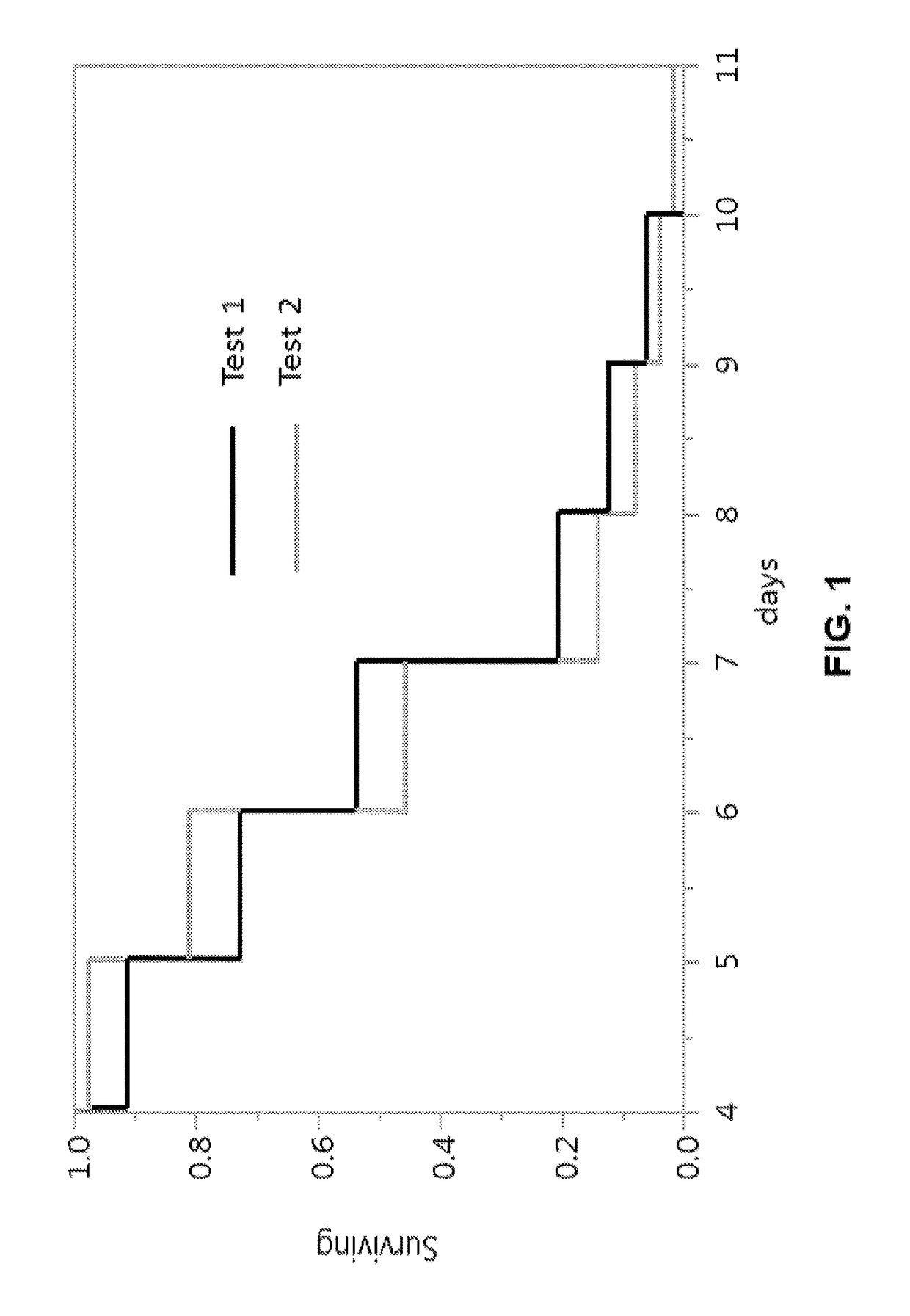Compositions and methods to control insect pests
- Summary
- Abstract
- Description
- Claims
- Application Information
AI Technical Summary
Benefits of technology
Problems solved by technology
Method used
Image
Examples
example 1
Having Insecticidal Activity
[0193]Nucleic acid sequences disclosed herein comprise the following nucleic acid sequences. Certain sequences are exemplary and were shown to have insecticidal activity against corn rootworms using the assay methods described in Examples 3 and 4 as set forth below. Such sequences or their complements can be used in the disclosed methods as described herein above and below. Methods for making inhibitory sequences are known in the art. DNA constructs, vectors, transgenic cells, plants, seeds or products described herein may comprise one or more of the following nucleic acid or amino acid sequences, or a portion of one or more of the disclosed sequences. Non-limiting examples of target polynucleotides are set forth below in Tables 1, 2, and 3, and SEQ ID NOs: 1-86, or variants or fragments thereof, or complements thereof. The official copy of the sequence listing is submitted with the specification as a text file via EFS-Web, in compliance with the American...
example 2
Transcript dsRNA
[0194]Two previously identified RNAi active targets RYANR and HP2 showed 54% and 49% identity to Drosophila snakeskin (Ssk) and Mesh, respectively. Without wishing to be bound by a particular theory, it is hypothesized that the Mesh-Ssk protein complex is required for septate junction formation in the Drosophila midgut.
[0195]Regions (fragments) of WCRW Ssk genes were produced by PCR using target specific primers to generate DNA templates and, followed by in vitro transcription (IVT) to produce long double stranded RNAs. The target specific primers also contain T7 RNA polymerase sites (T7 sequence at 5′ end of each primer). Following enzymatic digestion and removal of the DNA template, the IVT reaction products were incorporated into artificial insect diet as described below. Briefly, five double stranded RNA (dsRNA) samples were used in two tests for the LT50 comparisons in three tests (See Table 4 below). RYANR-Frag 1 and four other samples (HP2-7, PAT3-13, ProtB-1 ...
example 4
f Larval / Neonate LT50 Assay
[0204]The LT50 of RYANR-Frag 1 was 6.6 d in Test 1 (P=0.72, Log-Rank test, see Table 5 below and FIG. 1). The data from Test 1 with RYANR-Frag 1 as the positive control. RYANR-Frag 1 had the lowest LT50 (6.6 d) with LT5050 than other samples.
TABLE 5LT50 results of RYANR-Frag 1.*LT50LowerUpperSampleTest(d)95% CI95% CLGrouping**DV-RYANR-16.66.27.1aFRAG1*Tested at 5 ppm in Test 1 on WCRW (n = 48).**P = 0.72, Log-Rank test.
[0205]In order to further assess the dsRNAs, Test 2 was repeated at a higher dose (50 ppm) in the diet plug. In this experiment, RYANR-Frag 1 had lowest LT50 (5.5 d) at 50 ppm treatment by two-step exposures, one for WCRW neonates and the other for one day old larvae at the same dose (see Table 6 below). RYANR-Frag 1 had significantly lower LT50 than other 4 samples (HP2-7, PAT3-13, ProtB-1 and RPS10-4) with LT50>6 d. The results indicated that RYANR-Frag 1 had lower LT50 on WCRW than the other samples examined, suggesting fast insect contro...
PUM
| Property | Measurement | Unit |
|---|---|---|
| Fraction | aaaaa | aaaaa |
| Fraction | aaaaa | aaaaa |
| Time | aaaaa | aaaaa |
Abstract
Description
Claims
Application Information
 Login to View More
Login to View More - R&D
- Intellectual Property
- Life Sciences
- Materials
- Tech Scout
- Unparalleled Data Quality
- Higher Quality Content
- 60% Fewer Hallucinations
Browse by: Latest US Patents, China's latest patents, Technical Efficacy Thesaurus, Application Domain, Technology Topic, Popular Technical Reports.
© 2025 PatSnap. All rights reserved.Legal|Privacy policy|Modern Slavery Act Transparency Statement|Sitemap|About US| Contact US: help@patsnap.com


